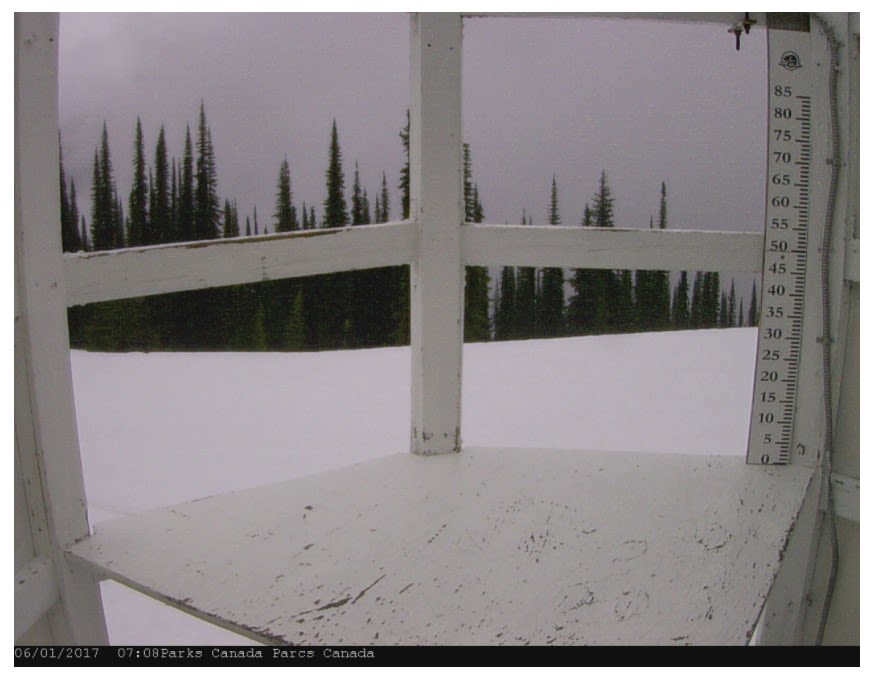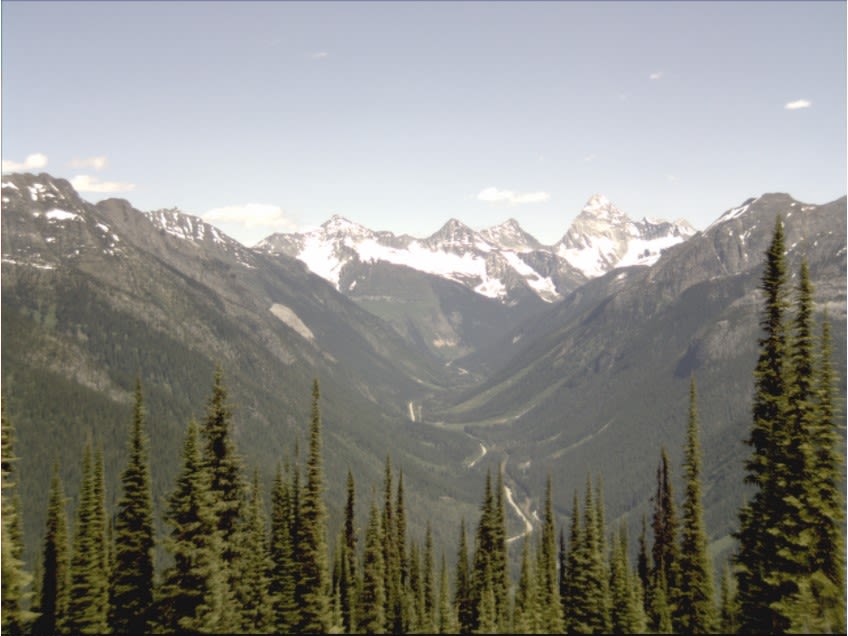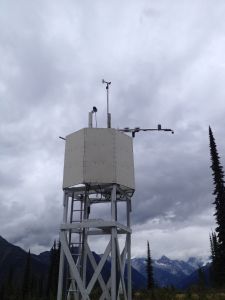
With it’s stunning scenery, topographical diversity and vast networks of trails and water ways, Glacier National Park is a year-round playground for hikers, rock climbers, campers and skiers alike. The presence of various micro-climates within the park however, creates challenges for reporting snow line altitudes and current weather conditions.
The problem
Located in the interior wetbelt, the mean annual precipitation in Glacier National Park is 1.995 metres, or 6 feet 6.5 inches. Snowfall typically begins in October, and by March, elevations above 1600 meters have commonly accumulated snow depths of 5 meters or more[1]. This winter snowfall creates perfect conditions for avid skiers, and the spring months bring rising temperatures and clear days that encourage hikers and rock climbers to visit the area. While springtime temperatures and clear skies may indicate favourable conditions, snow lines may still be too low on the mountains for many outdoor activities, making public safety and accessibility top concerns for Parks Canada operators.
Additionally, the areas elevation, valley alignment, shading from surrounding mountain tops, glacial winds, and, despite the geographical distance, winds from the Pacific Ocean, create a perfect storm of unpredictability for weather forecasting throughout the year. The conditions in one valley could be clear and sunny, while an unexpected rain or snowfall is blanketing another valley floor nearby. As a result, confirming current weather conditions in a particular valley without physically being there could be quite difficult.
The solution
As a long-standing client, Parks Canada knew they could rely on Campbell Scientific Canada (“CSC”) to recommend an alternative to the CC5MPX camera housed within their Fidelity Snow Board at 1910 m at the west end of the park. The limited zoom capabilities of the CC5MPX could not provide a detailed enough picture of snow line altitudes on mountains across the valley to suit Parks Canada’s needs.


So, on August 23rd, 2016, CSC installed a CCFC at the west end of Glacier National Park looking east to Rogers Pass, Alberta, providing a single full view of the valley, with the ability to zoom in on mountaintops above the valley. The CC5MPX continues to monitor snow accumulation in the Fidelity Snow Board, but is no longer the sole source of real-time information.
 Considerations
Considerations
Re-positioning the CC5MPX further into Rogers Pass was not an option as the alignment of the valley eliminated the ability to maintain a full, singular view, while obtaining closer images of the mountain tops. And installing additional cameras to supplement the CC5MPX images would have been cost prohibitive and provided too many separate images that would have been inefficient to view.
Given the climate of the region, it was known that any alternative equipment to the CC5MPX needed to be capable of withstanding extreme weather events and temperatures that consistently fall as low as -20°C in the winter months.
It was therefore decided to install a single CCFC with zoom, capable of withstanding the most intense weather conditions and capturing a single view of Rogers Pass.
Results
With their newly installed CCFC, Parks Canada is able to provide the general public with real-time views of Rogers Pass. A feed from the camera is available on the Parks Canada website, with a new image available every half hour, at 20 and 50 minutes past the hour. Images from the camera feed can be compared to a “Clear Day” view also available on the website for further validation of conditions.
Now the general public can stay informed of current snow line altitudes within Rogers Pass, and use these real-time views as supplemental information to weather forecasts for the area to ensure their planned activities are safe.
[1] “Weather and Climate”. Glacier National Park of Canada. Parks Canada.
Case Study Summary
Application
Year-round snow line monitoring on Mount Sir DonaldLocation
Rogers Pass in Glacier National Park, AlbertaProducts Used
CCFCContributors
Parks Canada and Travis Holder, CSCParticipating Organizations
Parks CanadaControlled Devices
CC5MPX & CCFCRelated Website
Glacier National Park Weather & Webcams InformationView the PDF